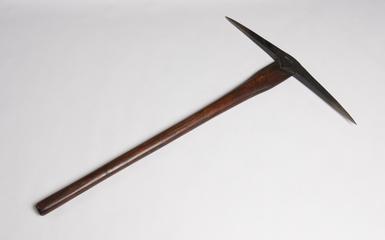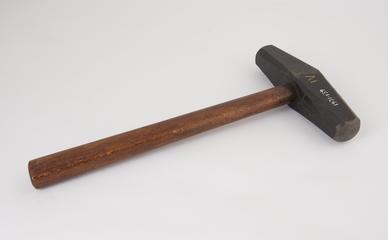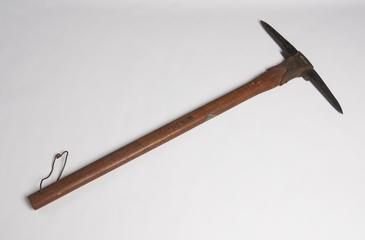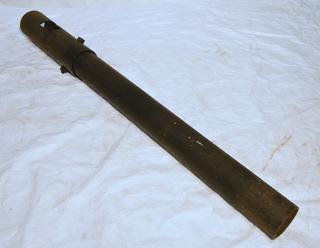
Safety lamp
- PART OF:
- Collection of safety lamps.
- Made:
- -1882 in Wigan
Safety lamp, Mueseler no.40, from the Royal Commission on Accidents in Mines, 1879-86, maker: J.N. Hart, Wigan, marking: makers name and "BRYHAM", -1882
The Bryham lamp is a modification of the Mueseler type. The earlier form had two glasses surrounding the flame, the annular space between them being closed, top and bottom, by a ring of gauze, the upper ring being the ordinary Mueseler diaphragm. The air entered as in ordinary Mueselers, traversed the annular space between the glasses, and passed through the lower gauze to the flame. The chimney fitted over the inner glass, and, in this respect, resembles the modern combustion tube lamp. In the lamp shown, the inner glass is dispensed with and the chimney modified by putting a gauze box on the top.
This miner’s lamp is one of a collection of over two hundred lamps examined by the Royal Commission on Accidents in Mines, 1879-1886. Mining has always been a dangerous occupation – In Britain, up to 1800 miners died in accidents every year. The Commission sought to prevent accidents from happening, and to limit their consequences. Miners need light to work, but often lamps caused devastating explosions when the flames within came into contact with gases such as methane present in the atmosphere.
The Commission emphasised the insecurity of the older Davy and Stephenson-type lamps, which were still used in many mines. Unless enclosed in a tall glass shield or case, the faster ventilating currents being used underground meant their internal flame could contact the atmosphere outside, potentially causing an explosion.
The Commission experimented with over 250 lamps, and many types failed to give security in explosive air currents of over 1,000 ft. per min. velocity. Even in the safe lamps, however, the ultimate source of danger— the breaking of the glass - was always present. Moreover many of these lamps either produced little light or were too easily extinguished by movement of the lamp. Others were too complicated for general mining use. The Commission identified which lamps should not remain in service, and which had the best record for safety, good illumination, and simplicity of construction.
Details
- Category:
- Mining & Ore Dressing
- Object Number:
- 1886-233/75
- type:
- safety lamps
- credit:
- Geological Museum (Jermyn St.)




